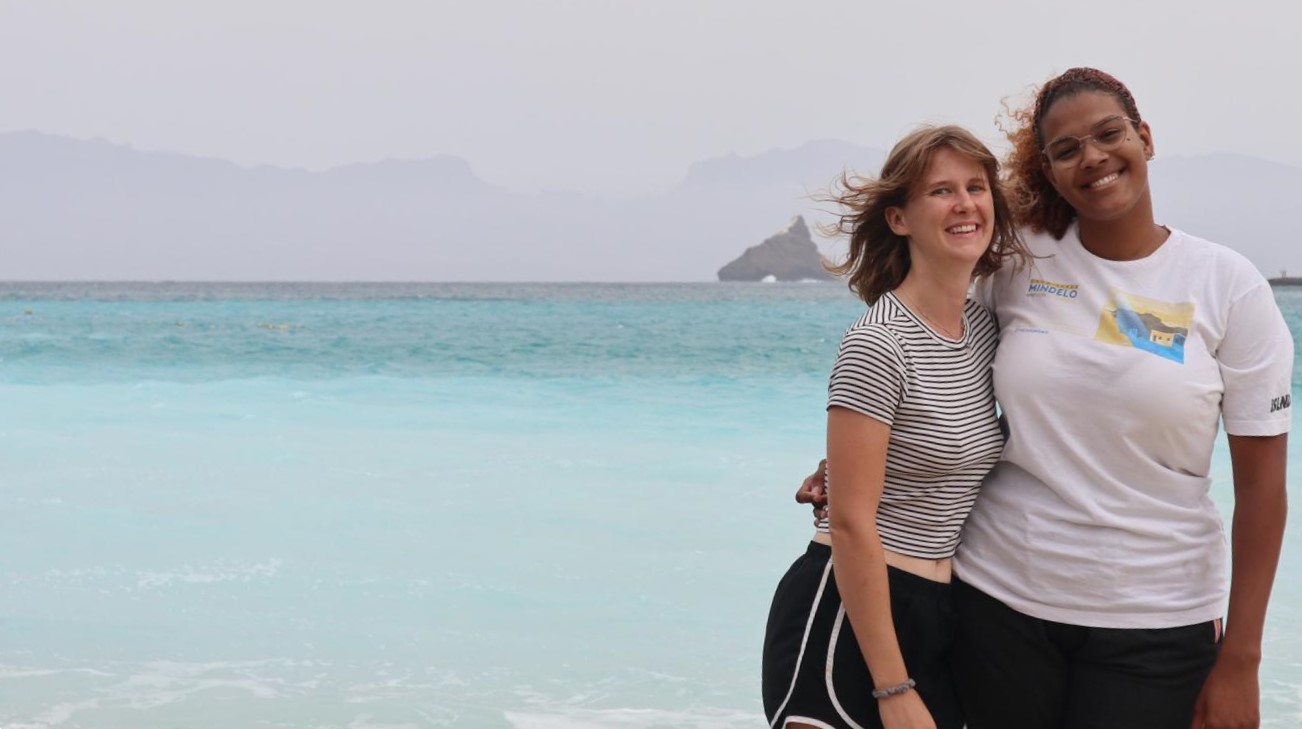Oi tud drt? – To read this Kriol words here, which say “Hi, everything fine?”, means GAME is back in Cabo Verde.
This year, Melanie (Universidade Técnica do Atlântico, Cabo Verde) and Lotte (University of Freiburg, Germany) have the chance to work together as a binational team on a still largely unexplored topic: the influence of artificial light at night (ALAN) on macroalgae.
As the plane approaches the archipelago of volcanic origin with its collar mountains, in the middle of the ocean, it becomes clear that the small island of São Vicente (with an area that is only twice the size of Kiel) is a very special destination for our research. We are located in Mindelo that is the capital of the island with around 75 000 inhabitants. São Vicente is one of ten islands of the archipelagic country, which is located just over 600 km off the coast of Senegal. The isolated location, surrounded by nothing but the sea and the sun, will give us a lot of pleasure and at the same time confronts us with many challenges. We would like to give you an insight into our daily (research) life.
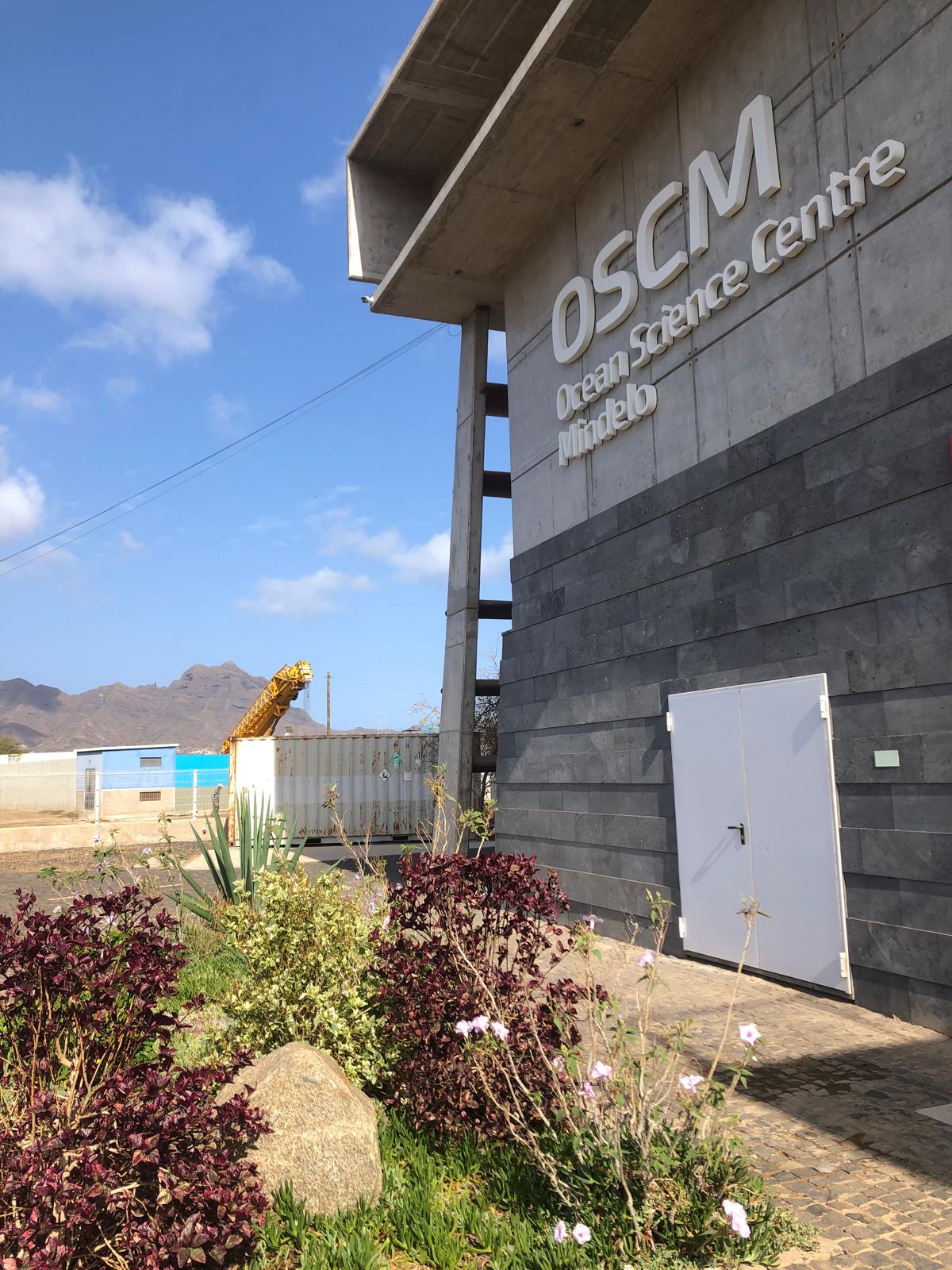
As other GAME 2024 teams already explained in their blogs, we are researching the influence of ALAN on macroalgae. The topic complements the research series on ALAN of the last GAME years, since for the very first time photoautotrophic organisms are considered. We raise the question whether macroalgae, as light-dependent organisms, change their performance in response to ALAN. To do this, we will observe growth rates, photosynthesis rates and the capacity to defend against grazing in a laboratory experiment.
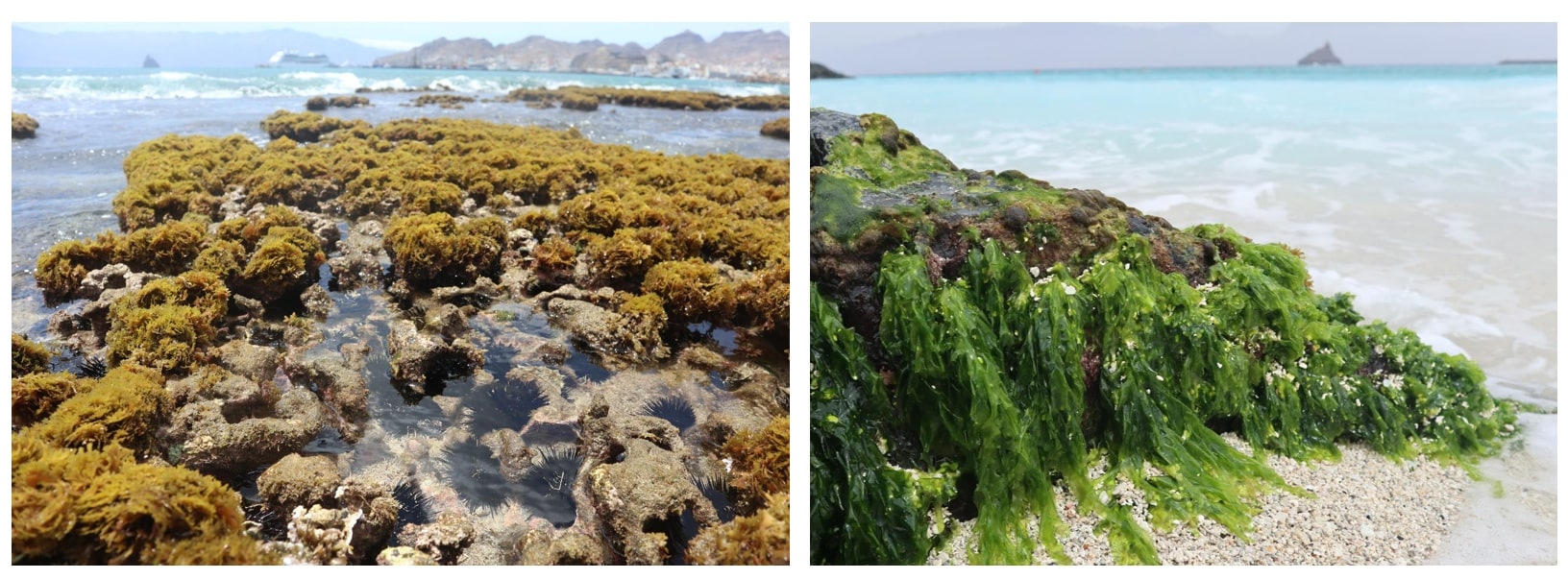
If in the evening you sit in a bar on the jetties of Mindelo, our research topic becomes very real, since various species of macroalgae, that grow on the floating walkways become visible under the night lighting of the harbor. A total of 330 species of macroalgae have been described for the archipelago, and for an island state that is so far away from the mainland, the sea and all its biodiversity have a special importance. Although macroalgae are not yet used commercially, they are a visible component of costal ecosystems. These ecosystems are more valued for their functions of recreation, tourist attraction and food production for fish and shellfish. And because of that, knowledge about the ocean and its organisms is of relevance for the islands. The Ocean Science Center Mindelo (OSCM) as a research hub for marine sciences between the European and African continent is therefore a perfect location for this international project. The OSCM currently houses our aquaria and with that is our current center of life.

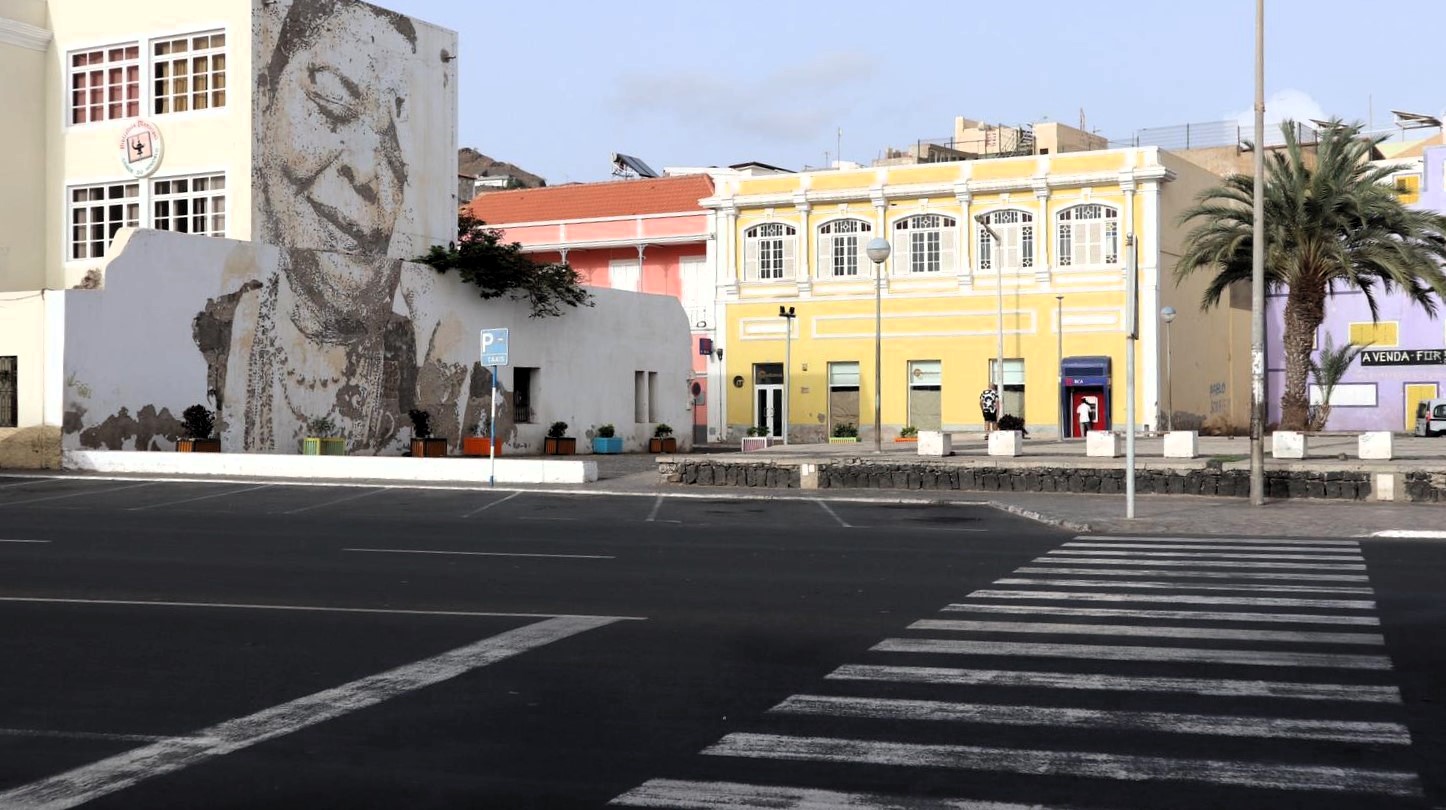
The warm and open atmosphere of Mindelo makes it very easy to feel at home. The always good weather, the friendly people and the tranquil city, where it is easy to find your way around, make life very easy. The houses are colorful, the streets are small but always full of people and especially in the evening there is always live music in the city center or even one of the many festivals that take place on the beach or on the streets. No matter whether it is in a research context or in the remaining leisure time, the island of São Vicente has much to offer for both, for a marine biologist and for a tourist. Every excursion to collect the experimental organisms is a small insight into the huge biodiversity of the tropical Atlantic. Whether species of corals, algae, starfish, crabs or creatures, of which at least Lotte had no idea existed, the variety of colors and shapes is impressive.

And whenever you take a short trip to another beach in São Pedro on the weekend, you will find yourself in the breathtaking experience of swimming with green turtles (Chelonia mydas). It is only one of the five observed turtle species in Cabo Verde. For the most abundant loggerhead turtle (Caretta caretta) the white beeches of Cabo Verde are the only major nesting area for loggerhead turtles along the entire eastern Atlantic coast. Green and loggerhead turtles are protected by national NGOs, which help females building nests, rescuing individuals which are entangled in fishing nets, as well as being attacked by dogs. ALAN is also a danger for sea turtles, as they use natural light sources for orientation and the artificial light distorts these paths.
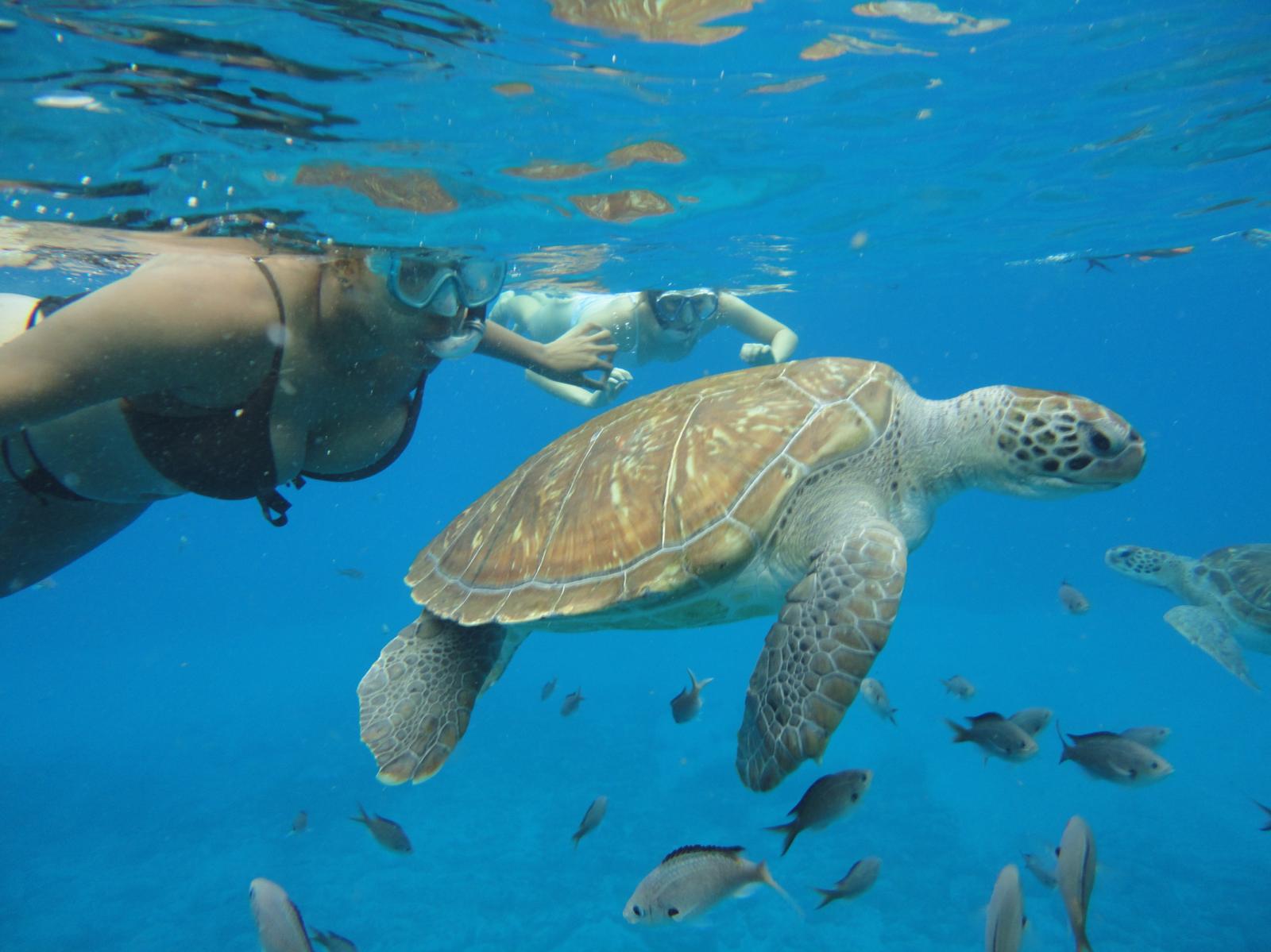
But for all the beauty of the picturesque island life, the availability of things is sometimes limited. Hence, the answer to the question “where can we get that?” is often a laugh. This moment always gives you the chance to show creativity and to practice patience. Especially in the beginning, a short errand turned easily into hours of walking through the small stores of Mindelo. More than this, without a local person who speaks Kriol fluently, it seems an impossible challenge to simply buy things, find the way to the next shop or get technical help. But with a certain amount of acceptance and perseverance, we managed to build a suitable set-up and to get (almost) everything we needed.
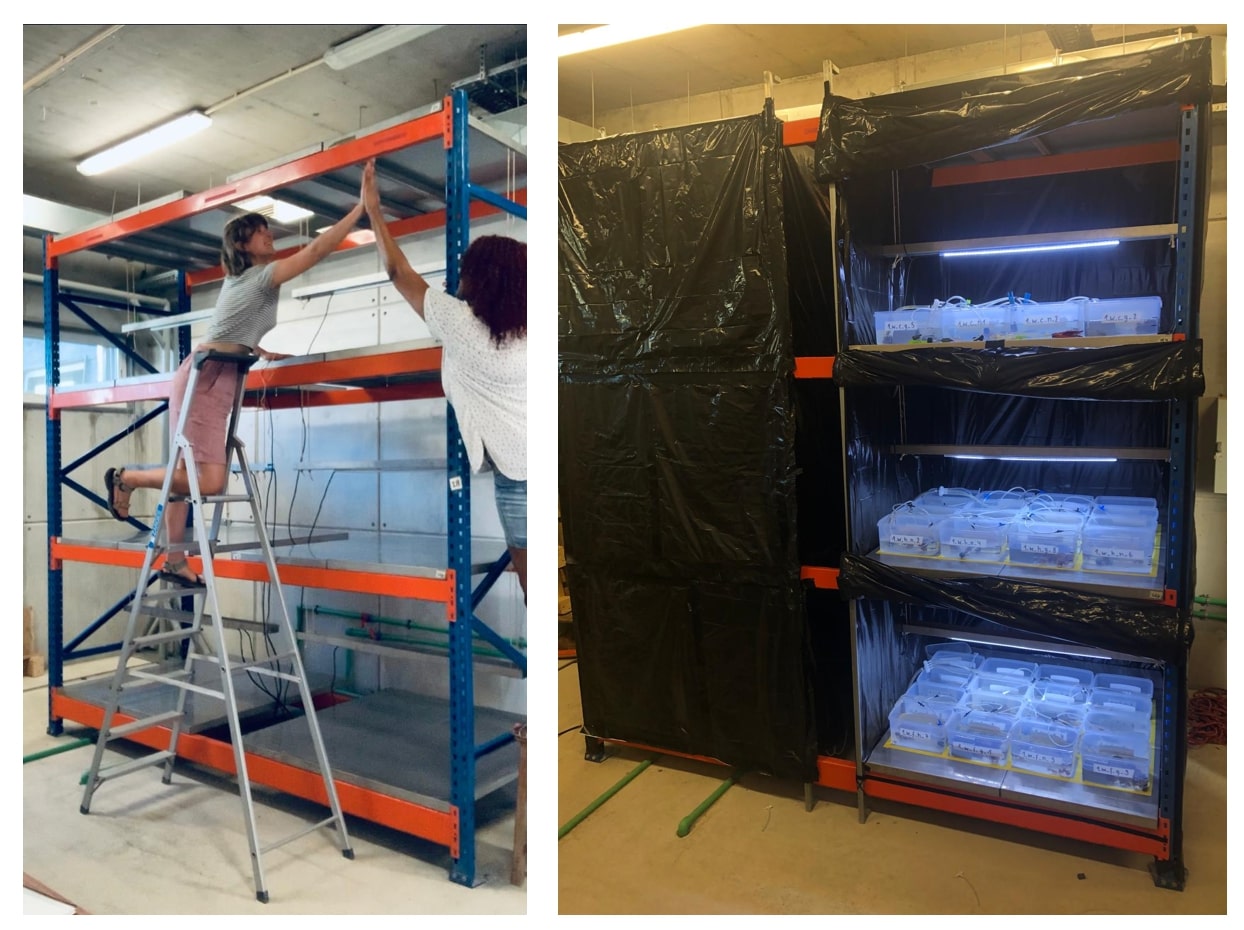
We are currently preparing our third experiment, in which Echinometra lucunter will again be the grazer and Grateloupia imbricata the algae species. So far, in the first two experiments no signs of an effect of the ALAN on the macroalgae can be found. However, this will be confirmed in the analysis in the autumn. Furthermore, we so far had major problems with a rapid onset of necrosis of the algae, which is probably due to the high temperatures in the laboratory. The sea urchin Echinometra lucunter can be found in the western Atlantic Ocean and in the Caribbean Sea. It can grow to a diameter of about 8 centimetres and its color varies from black to deep brownish-red. Grateloupia imbricata is an invasive red algae species in the Atlantic, which spreaded from its natural habitat in east Asia.
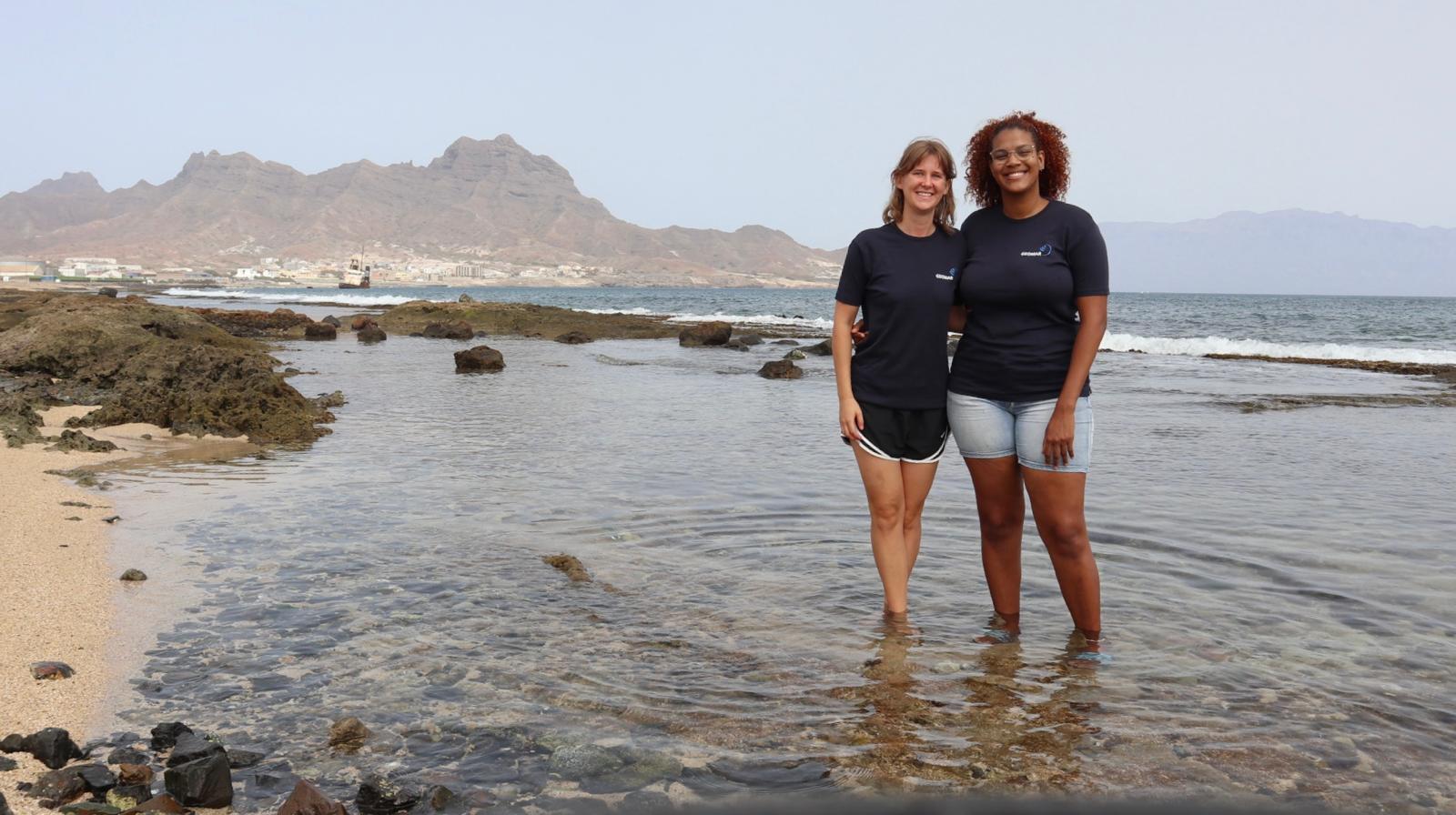
But even if the project sometimes gives us many causes for concern, jumping into the waves on the Atlantic in the evening always clears your mind and refresh you for the next day.
Cheers,
Melanie & Lotte
